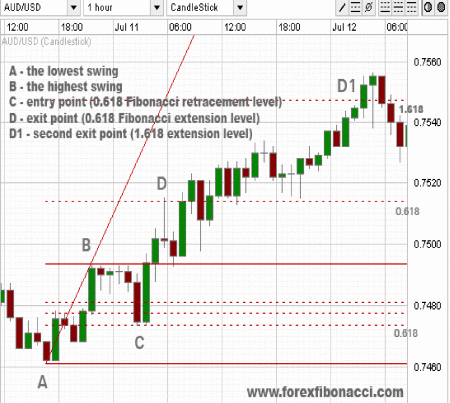Fibonacci Numbers Definition. Fibonacci Numbers are a sequence of numbers in which each successive number is the sum of the two previous numbers, for example: 0,1,1,2,3,5,8,13,21….. More importantly, each number divided by the following number eventually equates to an irrational number that has correlations to the natural world (golden ratio and golden spiral), including wave dynamics. Fibonacci numbers have been found to be useful in financial/currency markets to develop trading algorithms, applications and strategies. Forex traders use Fibonacci support and resistance lines, or “Fibs”, as an analytical way to determine the best entry and exit points for a trade or the placement of stop losses. Forex traders anticipate “retracements”, those levels where the price of a currency will predictably move with some consistency. If a currency price moves “A” in one direction, and then returns moving only “B” in the opposite direction, the “B” movement is the retracement. The ratio of “A/B” typically approximates one of the key Fibonacci ratios of 23.6%, 38.2%, 50%, 61.8% and 100%. Software tools perform the necessary calculations and overlay the results on a currency chart for the trader. Some forex traders regard the “Fibs” as their most trusted form of technical indicator. An example of a real forex chart from a web tutorial is presented below:

Forextraders' Broker of the Month
BlackBull Markets is a reliable and well-respected trading platform that provides its customers with high-quality access to a wide range of asset groups. The broker is headquartered in New Zealand which explains why it has flown under the radar for a few years but it is a great broker that is now building a global following. The BlackBull Markets site is intuitive and easy to use, making it an ideal choice for beginners.
